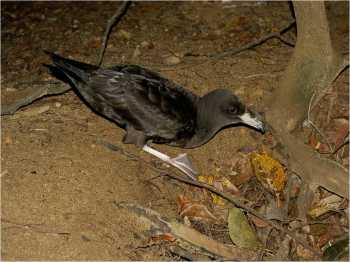Rachel Buxton (Department of Zoology and Center for Sustainability: Agriculture, Food, Energy and Environment, University of Otago, Dunedin New Zealand) and colleagues, writing in the Marine Pollution Bulletin, have looked at plastic fragments associated with breeding Flesh-footed Shearwaters Puffinus carnepeis in new Zealand.
The paper’s abstract follows:
“Marine plastic pollution is ubiquitous throughout the world’s oceans, and has been found in high concentrations in oceanic gyres of both the northern and southern hemispheres. The number of studies demonstrating plastic debris at seabird colonies and plastic ingestion by adult seabirds has increased over the past few decades. Despite the recent discovery of a large aggregation of plastic debris in the South Pacific subtropical gyre, the incidence of plastics at seabird colonies in New Zealand is unknown. Between 2011 and 2012 we surveyed six offshore islands on the northeast coast of New Zealand’s North Island for burrow-nesting seabird colonies and the presence of plastic fragments. We found non-research related plastic fragments (0.031 pieces/m2) on one island only, Ohinau, within dense flesh-footed shearwater (Puffinus carneipes) colonies. On Ohinau, we found a linear relationship between burrow density and plastic density, with 3.5 times more breeding burrows in areas with plastic fragments found. From these data we conclude that plastic ingestion is a potentially a serious issue for flesh-footed shearwaters in New Zealand. Although these results do not rule out plastic ingestion by other species, they suggest the need for further research on the relationship between New Zealand’s pelagic seabirds and marine plastic pollution.”

Flesh-footed Shearwater, photographed by Barry Baker
With thanks to John Kieser for information.
Reference:
Buxton, R.T., Currey, C.A., Lyver, P.O’B. & Jones, C.J. 2013. Incidence of plastic fragments among burrow-nesting seabird colonies on offshore islands in northern New Zealand. Marine Pollution Bulletin doi.org/10.1016/j.marpolbul.2013.07.011.
John Cooper, ACAP Information Officer, 31 July 2013

 English
English  Français
Français  Español
Español